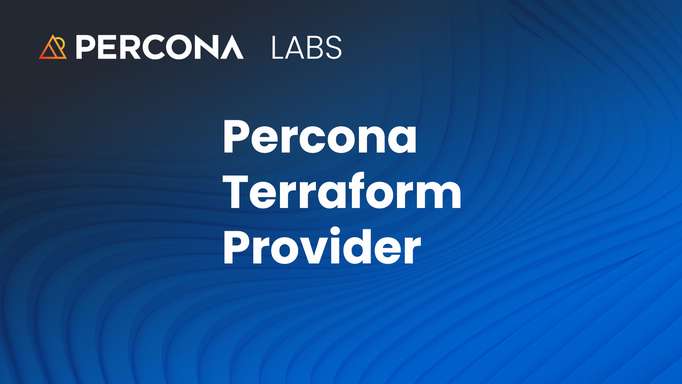Since summer 2017, Amazon RDS supports encryption at rest using AWS Key Management Service (KMS) for db.t2.small and db.t2.medium database instances, making the feature now available to virtually every instance class and type.
Unless you are running Previous Generation DB Instances or you can only afford to run a db.t2.micro, every other instance class now supports native encryption at rest using KMS. As for the Amazon documentation:
Encryption on smaller T2 database instances is useful for development and test use cases, where you want the environment to have identical security characteristics as the planned production environment. You can also run small production workloads on T2 database instances, to save money without compromising on security.
How to encrypt a new instance
Enabling encryption at rest for a new RDS instance is simply a matter of setting one extra parameter in the create instance request. For example using the CLI create-db-instance
[--storage-encrypted | --no-storage-encrypted]
or a check-box in the console. But what about existing instances? There is no direct way to modify the encryption of a running RDS instance.
Snapshot approach
The simplest way to have an encrypted MySQL instance is to terminate the existing instance with a final snapshot or take a snapshot in a read only scenario.
With the encryption option of RDS snapshot copy, it is possible to convert an unencrypted RDS instance into encrypted simply by starting a new instance from the encrypted snapshot copy, for example:
aws rds copy-db-snapshot --source-db-snapshot-identifier --target-db-snapshot-identifier --kms-key-id arn:aws:kms:us-east-1:******:key/016de233-693e-4e9c-87e8-**********
where the kms-key-id is the KMS encryption key.
Unfortunately this is simple but requires a significant downtime as you will not be able to write to your RDS instance from the moment that you take the first snapshot until the time the new encrypted instance is available. A matter of minutes or hours, according to the size of your database.
What about limited downtime?
There are at least two more options on how to encrypt the storage for an existing RDS instance:
- Use AWS Database Migration Service: the source and target will have the same engine and the same schema but the target will be encrypted. However, this is usually not suggested for homogeneous engines as in our scenario.
- Use a native MySQL read replica with a similar approach to the one documented by AWS to move RDS MySQL Databases from EC2 classic to VPC.
Encrypting and promoting a read replica
Let’s see how we can leverage MySQL native replication to convert an unencrypted RDS instance to an encrypted RDS instance with reduced down time. All the tests below have been performed on a MySQL 5.7.19 (the latest available RDS MySQL) but should work on any MySQL 5.6+ deployment.
Let’s assume the existing instance is called test-rds01 and a master user rdsmaster
We create a RDS read replica test-rds01-not-encrypted of the existing instance test-rds01.
aws rds create-db-instance-read-replica --db-instance-identifier test-rds01-not-encrypted --source-db-instance-identifier test-rds01Once the read replica is available, we stop the replication using the RDS procedure “CALL mysql.rds_stop_replication;” Note that not having a super user on the instance, the procedure is the only available approach to stop the replication.
$ mysql -h test-rds01-not-encrypted.cqztvd8wmlnh.us-east-1.rds.amazonaws.com -P 3306 -u rdsmaster -pMyDummyPwd --default-character-set=utf8 -e "CALL mysql.rds_stop_replication;" +---------------------------+ | Message | +---------------------------+ | Slave is down or disabled | +---------------------------+We can now save the the binary log name and position from the RDS replica that we will need later on calling:
Relay_Master_Log_File: mysql-bin-changelog.275872 Exec_Master_Log_Pos: 3110315And create a snapshot test-rds01-not-encrypted of the RDS replica test-rds01-not-encrypted as the replication is stopped.
$ aws rds create-db-snapshot --db-snapshot-identifier test-rds01-not-encrypted --db-instance-identifier test-rds01-not-encryptedAnd once the snapshot test-rds01-not-encrypted is available, copy the content to a new encrypted one test-rds01-encrypted using a new KMS key or the region and account specific default one:
$ aws rds copy-db-snapshot --source-db-snapshot-identifier test-rds01-not-encrypted --target-db-snapshot-identifier test-rds01-encrypted --kms-key-id arn:aws:kms:us-east-1:03257******:key/016de233-693e-4e9c-87e8-******Note that our original RDS instance test-rds01 is still running and available to end users, we are simply building up a large Seconds_Behind_Master. Once the copy is completed, we can start a new RDS instance test-rds01-encrypted in the same subnet of the original RDS instance test-rds01
$ aws rds restore-db-instance-from-db-snapshot --db-instance-identifier test-rds01-encrypted --db-snapshot-identifier test-rds01-encrypted --db-subnet-group-name test-rdsAfter waiting for the new instance to be available, let us make sure that the new and original instances share the same security group and that that TCP traffic for MySQL is enabled inside the security group itself. Almost there.
We can now connect to the new encrypted standalone instance test-rds01-encrypted reset the external master to make it a MySQL replica of the original one.
mysql> CALL mysql.rds_set_external_master ( -> ' test-rds01.cqztvd8wmlnh.us-east-1.rds.amazonaws.com' -> , 3306 -> ,'rdsmaster' -> ,'MyDummyPwd' -> ,'mysql-bin-changelog.275872' -> ,3110315 -> ,0 -> ); Query OK, 0 rows affected (0.03 sec)And we can finally start the encrypted MySQL replication on test-rds01-encrypted
mysql> CALL mysql.rds_start_replication; +-------------------------+ | Message | +-------------------------+ | Slave running normally. | +-------------------------+ 1 row in set (1.01 sec)We can now check the Slave_IO_State calling show slave status. Once the database catches up —Seconds_Behind_Master is down to zero — we have finally a new encrypted test-rds01-encrypted instance in sync with the original unencrypted test-rds01 RDS instance.
We can now restart the replica on the unencrypted RDS read replica test-rds01-not-encrypted that is still in a stopped status in the very same way to make sure that the binary logs on the master get finally purged and do not keep accumulating.
mysql> CALL mysql.rds_start_replication;
+-------------------------+
| Message |
+-------------------------+
| Slave running normally. |
+-------------------------+
1 row in set (1.01 sec)
- It is is time to promote the read replica and have our application switching to the new encrypted test-rds01-encrypted instance. Our downtime starts here and as a very first step we want to make test-rds01-encrypted a standalone instance calling the RDS procedure:
CALL mysql.rds_reset_external_master - We can now point our application to the new encrypted test-rds01-encrypted or we can alternatively rename our RDS instances to minimize the changes. Let’s go with the swapping cname approach:
aws rds modify-db-instance --db-instance-identifier test-rds01 --new-db-instance-identifier test-rds01-old --apply-immediately - and once the instance is in available state (usually 1-2 minutes) again:
$aws rds modify-db-instance --db-instance-identifier test-rds01-encrypted --new-db-instance-identifier test-rds01 --apply-immediatelyWe are now ready for the final cleanup, starting with the now useless test-rds01-not-encrypted read replica. - Before deleting the old not encrypted test-rds01-old, make sure you don’t need to keep the backups anymore: on switching the instance your N days retention policy on automatic backups is now gone. It is usually better to stop (not delete) the old unencrypted test-rds01-old instance until the N days are passed and the new encrypted test-rds01 instance has the same number of automatic snapshots.
- Done! You can now enjoy your new encrypted RDS instance test-rds01
To recap
Downtime is not important? Create an encrypted snapshot and create a new RDS instance. Otherwise you can use MySQL replication to create the encrypted RDS while your instance in running and swap them when you are ready. ∎


Discussion
We invite you to our forum for discussion. You are welcome to use the widget below.